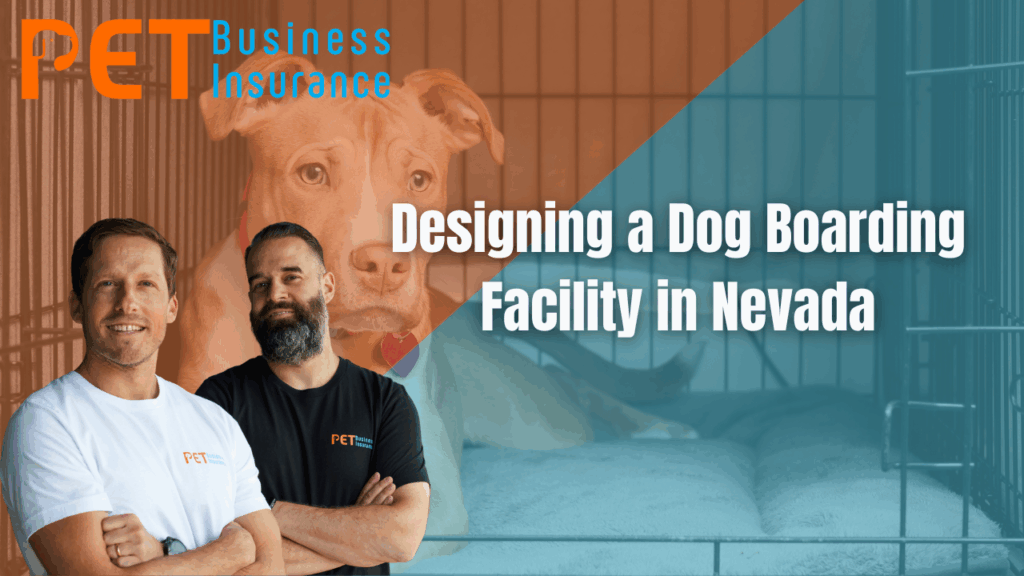
Are you planning to build or upgrade a kennel in Nevada?
Do you know what design features can keep animals safe, meet compliance standards, and survive the desert heat?
Designing a kennel in Nevada requires more than walls and a roof. You’ll need a comprehensive approach that tackles extreme weather, satisfies regulators, attracts modern pet parents, and stands up to insurance scrutiny.
In this article, you’ll learn:
- Why climate control isn’t optional—it’s life-saving
- The critical role of structural safety in a desert environment
- How indoor and outdoor spaces can promote animal comfort and reduce stress
- Which technologies modernize operations and customer service
- How to design for compliance now and into the future
Let’s explore the key elements of successful Nevada kennel design.
Climate Control: Mastering Nevada’s Extreme Environment
Nevada’s desert heat demands overbuilt systems. Regular triple-digit summers and freezing winters require HVAC systems with 150–200% the capacity of those in milder regions. Indoor temperatures must stay between 68–75°F—even when it’s 115°F outside.
Redundancy is essential. Smart facilities use multiple smaller HVAC units instead of one large system. If one fails, the rest keep working. Emergency generators are critical backup.
Proper insulation pays off. Use high-performance materials, reflective roofing, and radiant barriers to reduce cooling loads and stabilize indoor temps.
Ventilation and humidity require a delicate balance. Variable air exchange systems adjust to occupancy and conditions. Humidifiers keep levels between 30–50% to prevent static and respiratory stress.
Zoned systems optimize comfort and costs. Different areas need different settings—kennels, grooming spaces, and offices shouldn’t share one temperature zone.
Structural Design and Safety Features
Nevada’s geology demands specialized foundations. Caliche in Las Vegas and clay in the north mean deep or reinforced foundations are often necessary.
Earthquake resistance isn’t optional. Facilities—especially in areas like Reno—need seismic-friendly designs: flexible utility connections, reinforced walls, and jam-proof kennel doors.
Flooding and wind are real risks. Use elevated grading, reinforced roofs, and stormwater infrastructure to defend against flash floods and 60+ mph winds.
Fire safety requires planning. From sprinklers to fire-resistant materials, your facility must account for evacuation procedures tailored to animals.
Emergency exits need dual-use design. Plan evacuation routes and temporary holding zones with both pets and staff in mind.
Indoor Space Design and Animal Comfort
Go beyond the minimums. While regulations require 32 sq ft for dogs 30+ lbs, top-tier facilities offer 60–100 sq ft. More space allows for activity zones and enrichment.
Durable, cleanable materials are a must. Epoxy-coated floors and non-porous wall surfaces withstand constant cleaning. Add radiant floor heat in colder areas.
Drainage must handle more than daily cleaning. Design for high flow and emergency overflow. Include traps to block sewer gases.
Natural light calms pets, but control heat and glare. Combine filtered daylight with adjustable artificial lighting.
Noise control improves welfare. Use sound-absorbing materials, and consider white noise systems to reduce barking stress.
Design enrichment into the build. Windows, raised platforms, and built-ins keep animals engaged and reduce behavioral issues.
Outdoor Areas and Exercise Facilities
Shade is non-negotiable. Cover 75%+ of outdoor spaces with UV-resistant materials that also handle high winds.
Cooling systems enhance safety. Misters and splash zones work well in dry heat but must be designed to avoid flooding and slipping.
Surfaces must stay cool and clean. Grass is costly to maintain. Artificial turf gets hot. Look for specialized kennel surfacing that balances comfort and performance.
Secure, ventilated fencing protects animals. Choose materials that combine visibility, security, and aesthetics. Prioritize safe latches and gate design.
Drainage must manage both cleaning and storms. Use permeable materials, bioswales, and proper grading.
Water access is vital. Install auto-fill water stations and freeze-resistant plumbing to maintain hydration in all seasons.
Technology Integration and Modern Amenities
Security tech protects animals and offers peace of mind. Use HD cameras, motion sensors, and remote viewing to monitor animals and deter threats.
Smart climate and maintenance systems prevent failures. Sensors and automation can alert staff before problems escalate, keeping pets safe and comfortable.
Staff communication tools improve safety and efficiency. Intercoms, mobile radios, and emergency alerts are essential in larger facilities.
Customer-facing tech boosts trust. Offer webcam access, mobile updates, and online check-in. These systems streamline operations and improve client experience.
Automated systems enhance reliability. Feeding, cleaning, and inventory tech reduce errors and free up staff for higher-value tasks.
Regulatory Compliance and Future-Proofing
Designing above code protects your investment. Go beyond the minimums to meet future regulatory shifts and earn insurance discounts.
Animal welfare standards are rising. Design with space for expansion, enrichment, and improved climate systems to stay ahead.
ADA and environmental compliance are mandatory. Plan accessible customer areas and integrate water-saving and waste-management systems.
Insurance requirements may influence design. Work with an expert early to align safety features with coverage qualifications.
Building for the Long Haul
Nevada’s extreme environment demands more than a basic kennel—it calls for a purpose-built facility that protects animals, attracts discerning pet owners, and complies with evolving standards.
Whether you’re designing from scratch or upgrading an existing structure, your decisions today determine your success tomorrow. A well-designed kennel will support smoother operations, safer conditions, and better outcomes for animals and staff alike.
Ready to design your Nevada kennel for maximum protection and performance?
Get a quote from our kennel insurance specialists today. We’ll show you how smart design choices can reduce your risk, lower your premiums, and protect your investment for years to come.

